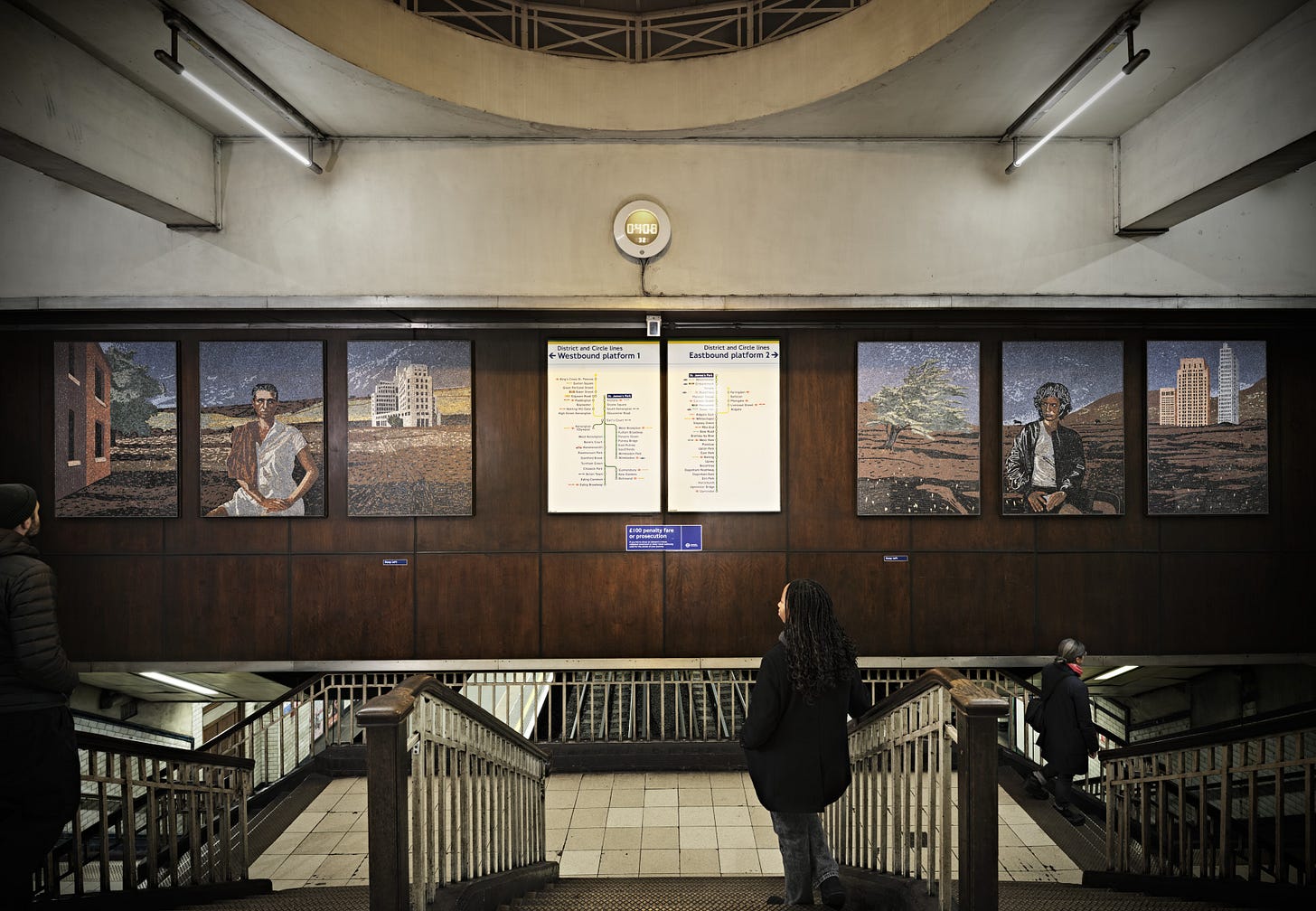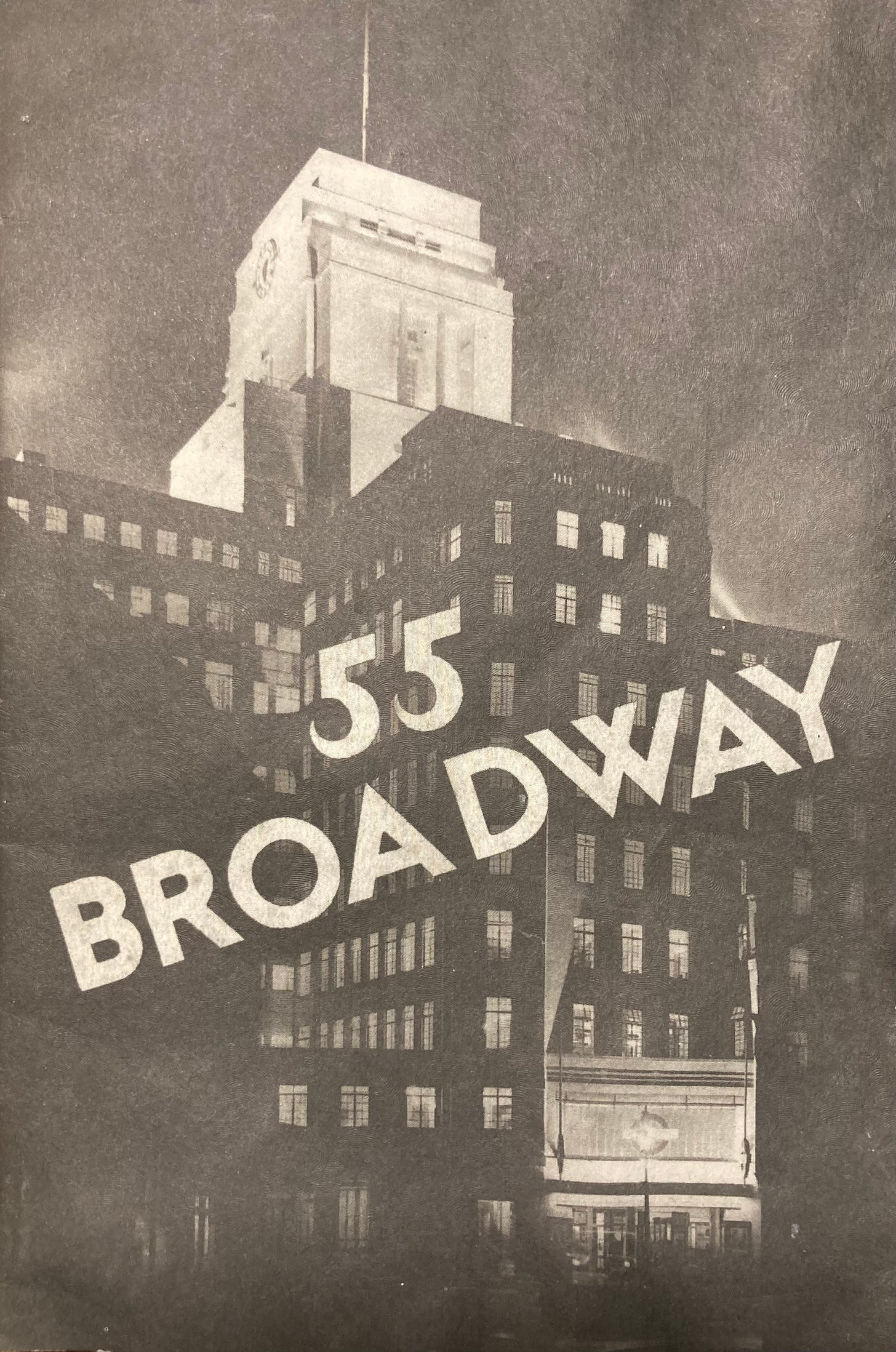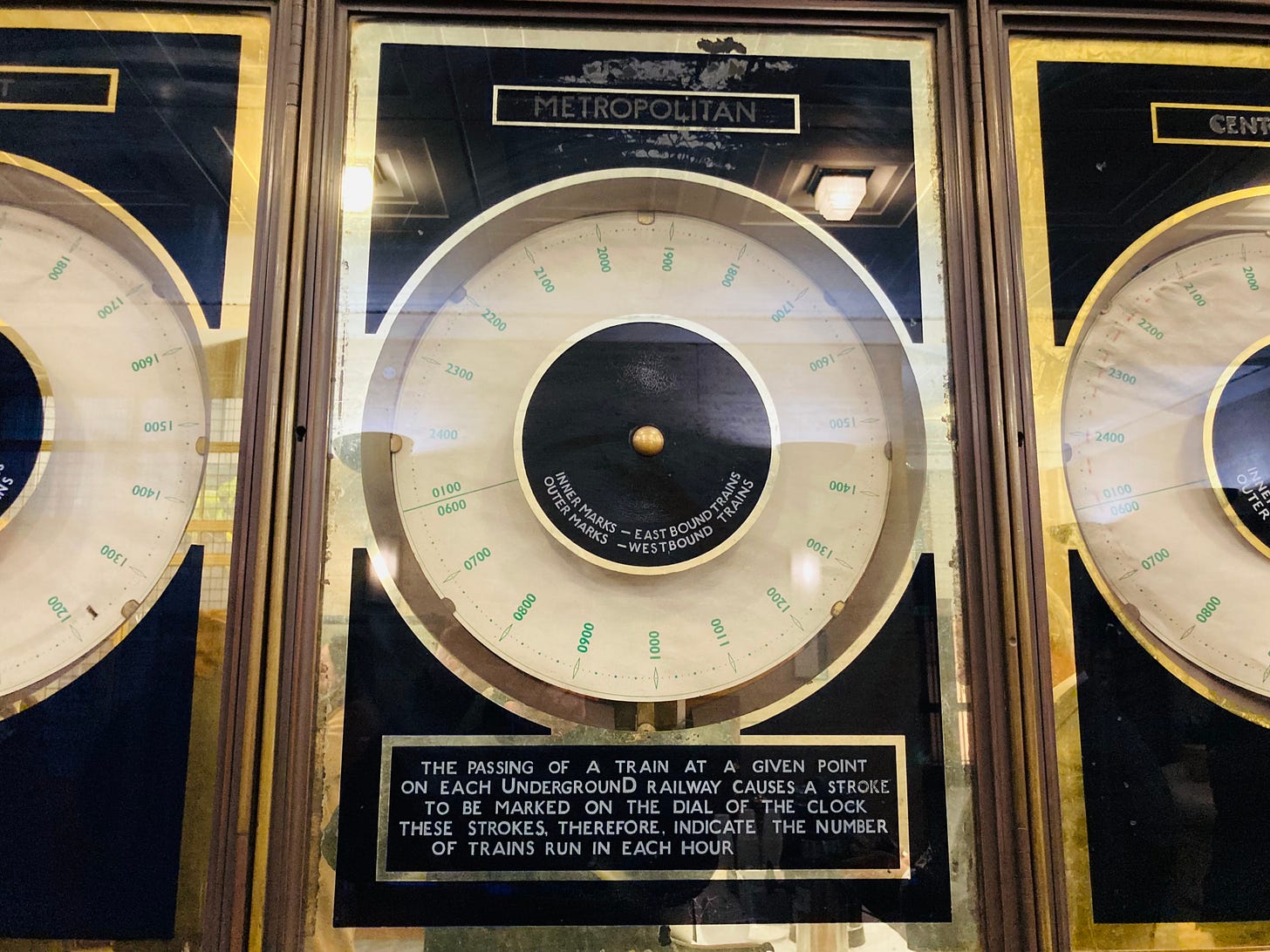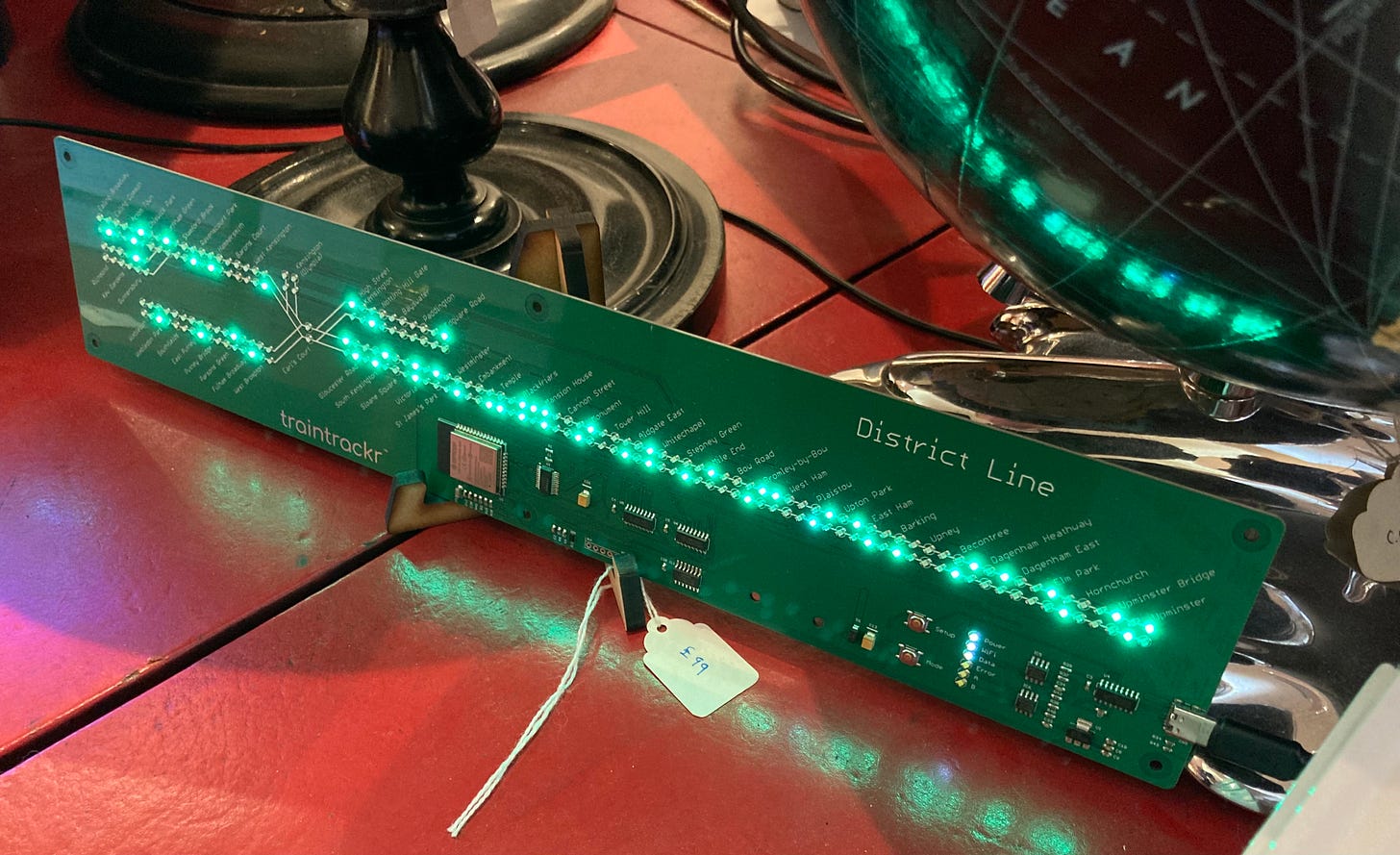Reading on Trains Number 42: The Angels of St James's Park

To St James’s Park station for the unveiling of a compelling new mosaic commissioned by Art on the Underground – Angels of History, by Hannah Quinlan and Rosie Hastings. The mosaic is in the form of two triptychs, depicting androgynous figures (one of whom reminds me of Mick Jagger in the 1970s) against a mysterious landscape of rolling hills, from which some buildings have sprouted. There’s a fragment of an inter-war terrace and three skyscrapers that look as though they belong in Chicago or New York. Also shown is London’s own first skyscraper, 55 Broadway, the former headquarters of London Transport, which sits atop the station.
According to the artists, the buildings, in their strange landscape, ‘take on a sacred, temple-like significance.’ The classical world is evoked and the two angelic or prophetic figures are ‘inspired by Michelangelo's five Sibyls in the Sistine Chapel.’ The mosaic overlooks the station atrium, so the figures stare down on commuters descending the staircase – illuminated by the orange glow of a delicate Art Deco lantern – to the District Line platforms below. The figures’ expressions are perhaps protective, perhaps judgmental, and a theme of the work is power, the station being located near the Royal palaces, the Houses of Parliament and civil service offices.
The station is inseparable from the building above, which symbolized the power of the Underground Electric Railways of London company, predecessor of London Transport, for whom it was built by Charles Holden; or perhaps one should say the success of the UERL. It was an uppity statement for this builder of subterranean railways to create the highest office building in London when it opened in 1929. But there was a democratic impulse behind 55 Broadway, particularly fitting when the UERL became the ‘public corporation’ that was LT. This is detectable in the very name – an ordinary street address, with another ordinary street address next door (number 54 being the old HQ of MI6). The foundation stone was laid not by King George V but by the building’s housekeeper and the foreman stonemason. Inside, the intersection of the office walls and floors was curved, to help the cleaners by facilitating the easy use of a mop.
The building occupies an awkward corner site, and it’s said that when Charles Holden realized the solution was to make it cruciform, he jumped for joy (which is hard to believe of this fastidious, teetotal non-conformist). One benefit of the arrangement was that light came in from all sides, and the personal office of Frank Pick, head of design (in effect) of LT, was on the north side, for the steady light – to assesses the art he was commissioning for posters to educate and entertain the ordinary Londoner.
There is public art on the exterior of the ziggurat-like building, too – not that the public approved of all of it. On the south side, a sculpture by Jacob Epstein called ‘Day’ was revealed in July 1929. The Guardian said: ‘A large father figure with a fierce face, flat and hard and round like the sun at noon, holds and presents a male child standing between his knees, while the child stretches up his arms towards the neck of the father, his face turning upwards in a gesture of reluctance to face his task.’ The writer approved: ‘Do we know that Epstein is bringing new beauty to our generation?’
But shortly before (or shortly after) that piece appeared, a jar of liquid tar had been thrown at ‘Day’. Epstein, with his shabby sweaters and many mistresses, was a controversial figure; some of his primitive-looking nudes had been exhibited in a Blackpool peepshow. The trouble with ‘Day’ was the boy’s member, which was deemed obscene, being too long. There was a public campaign, and Frank Pick offered his resignation, since he had commissioned Epstein. But then Epstein took his mallet and chisel and knocked an inch and half off the offending organ – and I often think that if that stone child’s member hadn’t been shortened, the Piccadilly Line might never have been lengthened to…well, Cockfosters, since that was Frank Pick’s pet project.
There was some apparent lessening of public spiritedness in the late 1970s when what had been a wide thoroughfare at the base of the building – allowing people to cut the corner, or shelter from the rain – became a reception area for the offices above, supervised by security guards. But this change was indeed a security measure in the light of IRA bomb attacks, so we can’t see it as a betrayal of Pick-ism. At the same time, some smart little shops were opened in the marble labyrinth as the base of 55 Broadway, one of which used to sell books about the Underground.
Those shops are currently closing, as 55 Broadway – no longer fit for purpose as an office for TfL despite, or because of, all its brass, marble and hardwoods – is recreated as a hotel. Shortly before the unveiling of the mosaic, I wandered into the former reception, where a dapper gent asked if I’d had breakfast yet, pointing me towards some croissants and coffee. I took him to be part of the TfL press team, but he turned out to be the hotelier, Tony Matharu, chair of Integrity International, the firm that has acquired 55 Broadway.
I judged from my chat with Mr Matharu that the building is in safe hands. He seemed fascinated by its history, and he explained to me the functioning of the six circular, clock-like tachographs that used to show, by marks on a round piece of paper, the movements of trains in both directions on six lines throughout the day. They’ve long since been disconnected from the network, but when I said, ‘Can’t you get them reconnected when this is part of the hotel?’ he said, ‘Now there’s an idea.’
(Incidentally, electronic approximations of those dials are made in the form of circuit boards by a firm called Traintrackr. When connected to the internet, Christmassy lights show the passing of trains through stations on particular lines, and one board shows the entire network. If you kept one by your bed, and were an early riser, you could see the District Line, for instance, flickering into life every morning, first as a few pioneering dots of green light, then blazing busily; and you would see the process in reverse after midnight.
And now, some remarks on St James’s Park at platform level.
Keep reading with a 7-day free trial
Subscribe to Reading on Trains to keep reading this post and get 7 days of free access to the full post archives.






